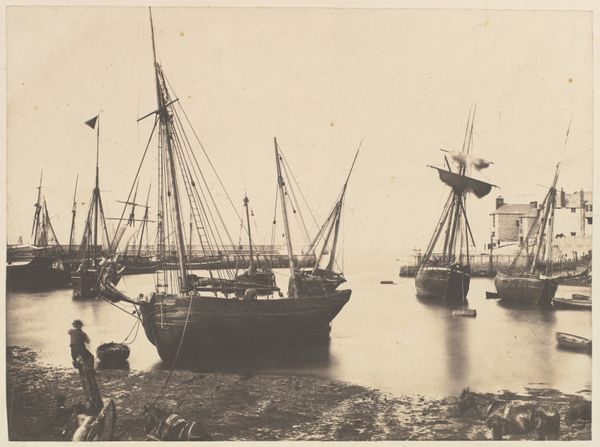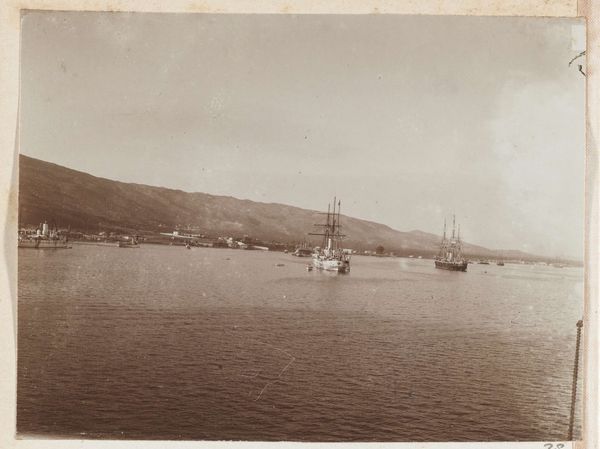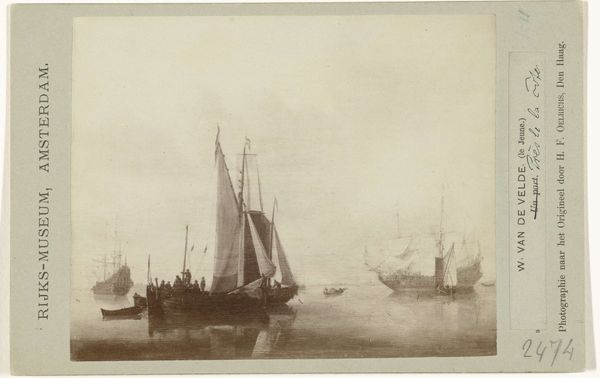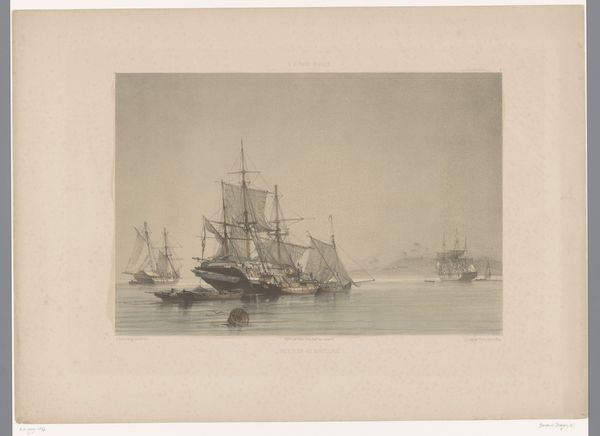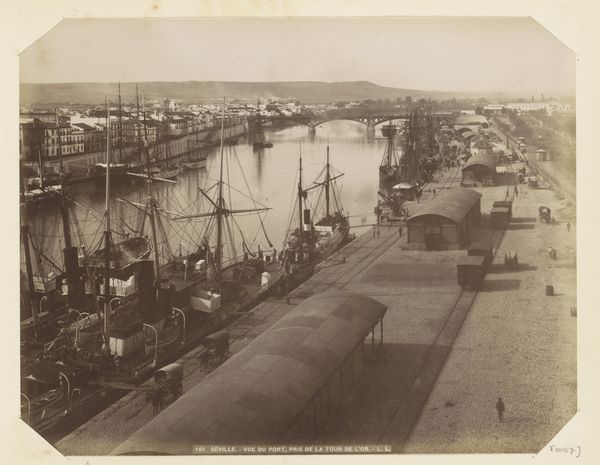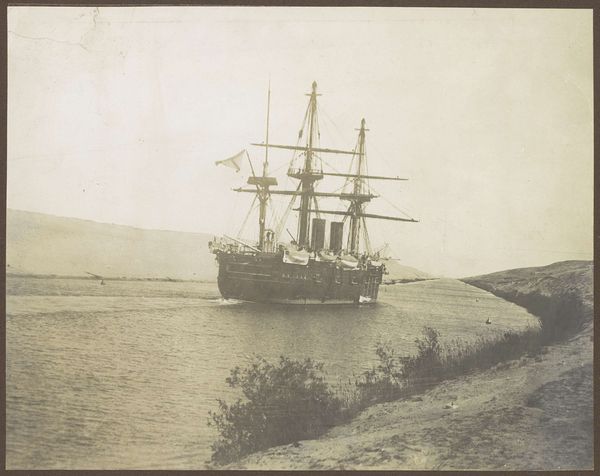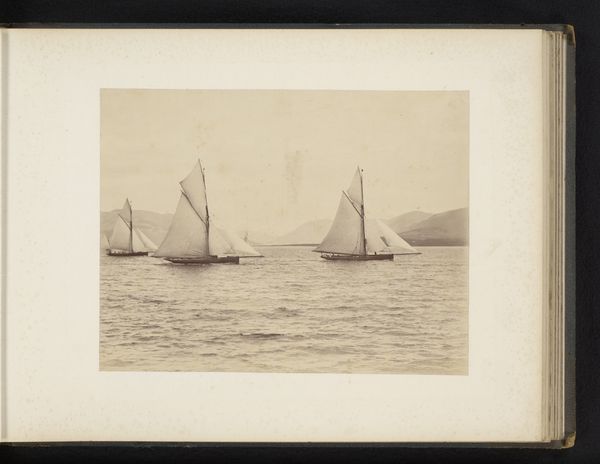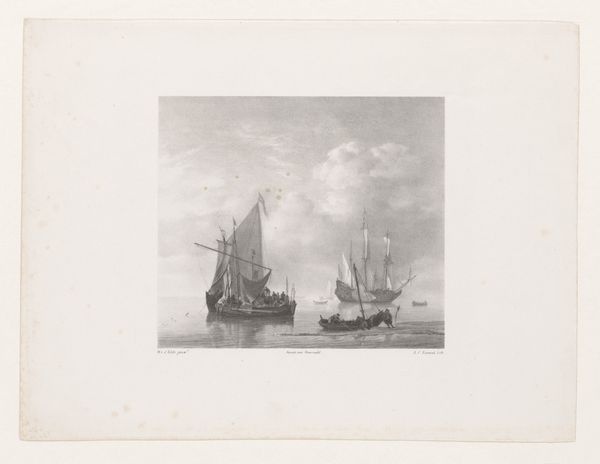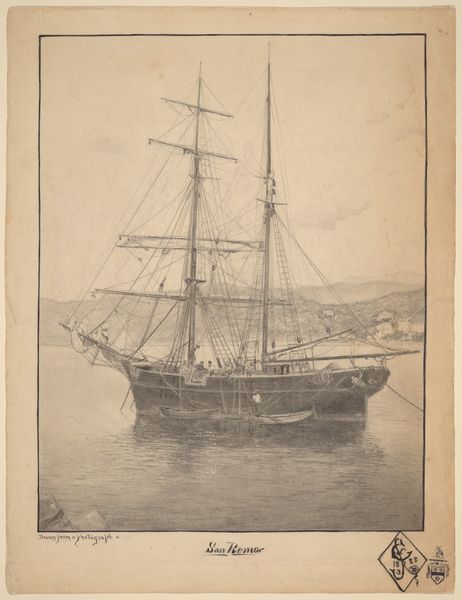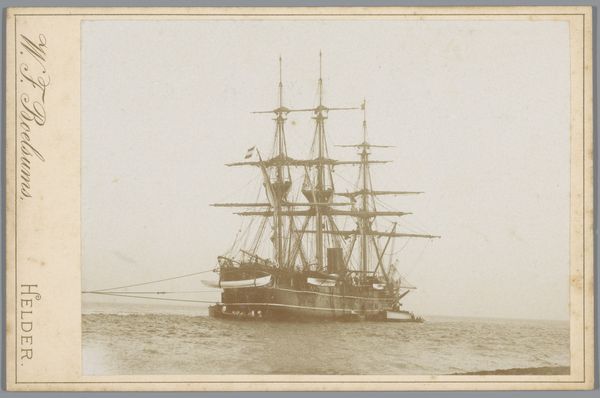
Zeegezicht met schepen ("At the tail of the bank, Greenock") c. 1865 - 1890
0:00
0:00
jamesvalentine
Rijksmuseum
photography, albumen-print
#
landscape
#
photography
#
albumen-print
Dimensions: height 115 mm, width 200 mm, height 231 mm, width 293 mm
Copyright: Rijks Museum: Open Domain
Editor: This albumen print by James Valentine, titled "Zeegezicht met schepen (At the tail of the bank, Greenock)" was created sometime between 1865 and 1890. It gives off such an interesting, almost ethereal feeling, a snapshot into another time with these ships. What aspects of its context and creation strike you? Curator: Immediately, I'm drawn to the albumen print process itself. It’s not just a picture, it's about labor. Think about the work involved in coating the paper with egg whites, sensitizing it, exposing it… this material transformation speaks volumes. What can this tell us about photography as both art and craft in this period? Editor: So, you're thinking about the socio-economic aspects of image creation, beyond just the composition of the boats? Curator: Absolutely. Who was employed? How readily available were these materials? Consider the trade routes that facilitated the distribution of albumen paper, potentially made using eggs from across the empire. It wasn’t simply clicking a button. Every print carries that weight, both literally and metaphorically. Are the subjects just ships or something else? Editor: Something else like...power? And global trade? These boats as objects become evidence of a globalized system, even in this seemingly peaceful image. Curator: Exactly. The "how" influences our perception of the "what". Understanding the labor and materiality demystifies the romantic notion of art and grounds it in a concrete social reality. What initially felt ethereal now gains sharper edges. Editor: This perspective definitely offers a more grounded, almost gritty way of looking at art. Thank you! Curator: My pleasure. Seeing art as a product of its time, rooted in material conditions, changes everything, doesn't it?
Comments
No comments
Be the first to comment and join the conversation on the ultimate creative platform.
